






Manufacturers
clear aspirations
engage with Industry 4.0, but without knowing
where
they won’t
Advanced manufacturing, IIoT, Industry 4.0, technology, no matter what you call the next generation of manufacturing, it is here, and you need to know about it.

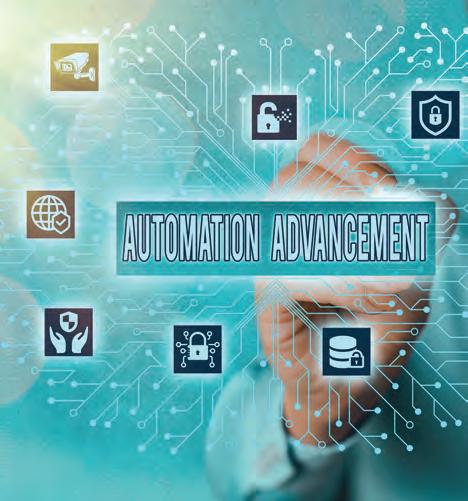
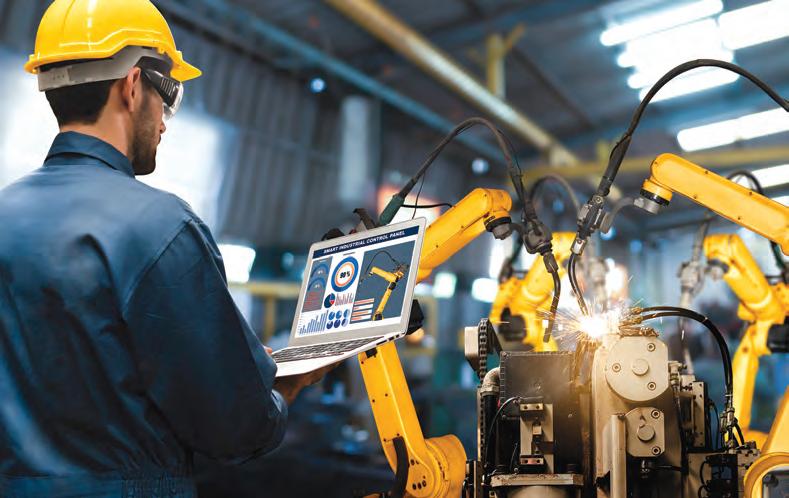
Before your enthusiasm creates an impulse to automate you need to pause, look deeply at the process, simplify, and ponder automation.

Consider whether your sales strategies are sufficient to catch and retain the attention of today’s younger buyers.
Employers have a responsibility to recognize the hazards by identifying all chemicals that are used, stored, handled, and generated in their workplace.
The days of sticking with the status quo, and expecting to be competitive, are long gone. Today’s customers are just a click away from comparing your company to the abundance of compet itors on the market globally. Years ago, the baseline was if a company did not have a web site it would lose customers, as people would say in a surprised tone, “wow, you don’t have a web site?”
Today’s customers expect a lot more than just having a web site.Your web site has to be the gateway to your company and showcase what it can offer them. Including having the most advanced manufacturing technology available on the market.
or it is not applicable to them (14 per cent). This result brings me back to my initial point about companies sticking to what they have been doing, and expecting to remain com petitive. Customers today want more and can seek solutions globally to achieve the results they need.
The one caveat of jumping into the deep end of advanced manufacturing, and making your operations fully advanced, is to make sure you are updating in the right areas, and for the right reasons. Nothing is worse than spending a plethora of money on new equipment and technology to later find out it did not help your operations to better compete and was simply a drain on resources.
READER SERVICE
Print and digital subscription inquiries or changes, please contact customer service
Angelita Potal
Tel: (416) 510-5113
Fax: (416) 510-6875
email: apotal@annexbusinessmedia.com
Mail: 111 Gordon Baker Rd., Suite 400
Toronto, ON M2H 3R1
EDITOR Mario Cywinski
226-931-4194 · mcywinski@annexbusinessmedia.com

ASSOCIATE EDITOR Monica Ferguson
416-510-5206 · mferguson@annexbusinessmedia.com
SENIOR PUBLISHER Scott Atkinson
416-510-5207 · satkinson@ annexbusinessmedia.com
NATIONAL ACCOUNT MANAGER Ilana Fawcett 416-829-1221 · ifawcett@annexbusinessmedia.com
MEDIA DESIGNER Svetlana Avrutin
ACCOUNT COORDINATOR Debbie Smith
416-442-5600 ext 3221 · dsmith@annexbusinessmedia.com
AUDIENCE DEVELOPMENT MANAGER Beata Olechnowicz 416-510-5182 · bolechnowicz@annexbusinessmedia.com
GROUP PUBLISHER Paul Grossinger pgrossinger@annexbusinessmedia.com
COO Scott Jamieson sjamieson@annexbusinessmedia.com

Recently, Plant magazine and Canadian Manufacturing surveyed their audience for the annual Advanced Manufacturing Outlook report, to gauge where Canadian companies are when it comes to adopting Industry 4.0 technology. We also conducted a roundtable to discuss the findings of the survey with industry experts. The overview is found on page 14 of this issue, while the polybagged report goes much deeper into the findings.
I won’t repeat the insight found in those write-ups; however, I do want to point out some highlights.
The survey found that 26 per cent of re spondents applied IIoT capabilities this year, while another 26 per cent are in the process of evaluating its relevance to their operations. A further 14 per cent have a plan and are investing in technology for deployment in the next year. This is very positive, and the numbers certainly appear to be moving in the right direction.
However, on the flip side, a total of 34 per cent of respondents said they are either not familiar with IIoT capabilities (20 per cent)
The repor t and subsequent roundtable discussion reiterates, that if you are updat ing your operations you should try to achieve the following (which survey respondents said they are applying): improving efficiency/ productivity (43 per cent), providing more visibility into production processes (28 per cent), improving maintenance functions (28 per cent), analytics functionality (24 per cent), tracking materials or shop floor assets (23 per cent), tying in business data from shop floor to top floor (20 per cent), developing new services/revenue streams (14 per cent), consolidating control rooms (14 per cent), and developing smart products (12 per cent).
For many small to medium sized compa nies, it is challenging to know what to update with the limited resources and where to start, planning is certainly key.
We trust you will find the Advanced Manu facturing Outlook Report and supplemental ar ticles in this issue helpful in your journey to automate your operations.
111 Gordon Baker Road, Suite 400
Toronto, ON M2H 3R1
Tel (416) 442-5600 · Fax (416) 510-5134 www.annexweb.com
SUBSCRIPTION RATES Canada – $76.00 per year
USA – $201.00 (CAD) per year
International – $227.00 (CAD) per year
Single copy – Canada $12.00
Add applicable taxes to all rates. Combined, expanded or premium issues, which count as two subscription issues.
ISSN: 1929-6606 (Print), 1929-6614 (Online).
PUBLICATIONS MAIL AGREEMENT NO. 40065710
Return undeliverable Canadian addresses to:
PLANT Circulation Department, 111 Gordon Baker Rd. Suite 400, Toronto, ON M2H 3R1
©2022 Annex Business Media. All rights reserved. Performance claims for products listed in this issue are made by contributing manufacturers and agencies. PLANT receives unsolicited materials including letters to the editor, press releases, promotional items and images from time to time. PLANT, its affiliates and assignees may use, reproduce, publish, re-publish, distribute, store and archive such unsolicited submissions in whole or in part in any form or medium whatsoever, without compensation of any sort. This statement does not apply to materials/pitches submitted by freelance writers, photographers or illustrators in accordance with known industry practices.
PRINTED IN CANADA
The majority of companies are either applying or plan to apply IIoT technology.




Air Canada and Swedish Saab announced that they are joining as Heart Aerospace shareholders. Heart Aerospace is investing in the production of battery-driven planes in Gothenburg and expects to grow to 500 people within three years. Together with airport owner Castellum, it is investing in

a campus for electric aircraft indus try at Säve airport.
Heart Aerospace’s facility at Säve airport, will be called “North ern Runway”, and will include a headquar ter, a research and development centre, a prototype hangar, a test-flight hangar, and a final assembly hall. Säve has no commercial flight traffic.

Canadian 3D construction printing company, nidus3D, is building North America’s first two-story 3D printed building in Ontario.
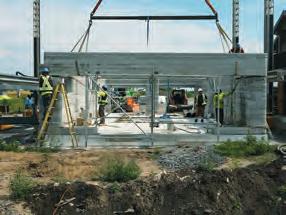
Nidus3D used the BOD2 printer from COBOD, in 3D con struction printing solutions, whose technology has already been proved in several countries and used to 3D print the first two and three-story buildings in Europe.
The two-story house is the sec ond structure nidus3D built, the fir st being earlier this summer. The building will have a studio on the ground floor and a residence

The agreement ensures energy and carbon reduction through out the industry by incorporating energy efficienc y from the very start of the production process. Through this agreement, the three parties will help launch Tai wan to the forefront of a global sustainable manuf acturing push.
The deal sees the three global players joining to represent Tai wan and Germany by promoting energy efficiency, carbon reduc tion, and information security, in addition to continuing to sup port the advancement of ESG 4.0, combination of ESG and Industry 4.0.

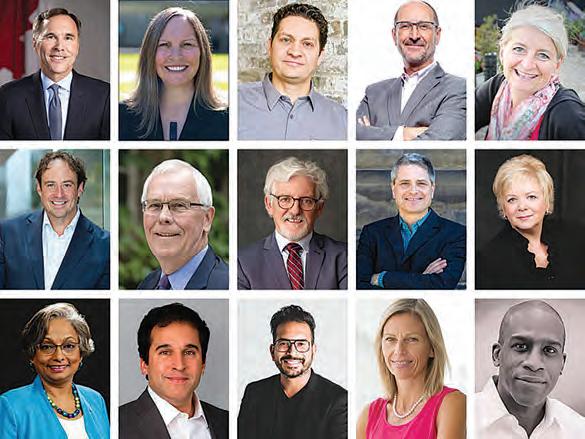
Toronto Metropolitan University and Magnet announced the newly appointed members of Magnet’s inaugural Advisory Board. Magnet’s social innovation and technology platform serves to support businesses of all sizes to connect with talent and stake holders such as service provid ers, industry associations, policy maker s and researchers, and to collaborate to deliver workforce development solutions.
The initial mandate of the board will be to provide guid ance and foresight to TMU and Magnet on establishing its gover nance framework and ensuring a strateg ic growth agenda.

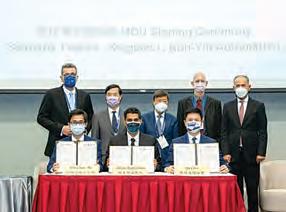
Henkel inaugurated its Inspira tion Center Düsseldorf (ICD) with an investment of 130 million euros. The Adhesive Technolo gies business unit built a global

innovation and customer centre on the premises of the company headquarters.
With a floor area of 47,000 square meters, the ICD provides space for 30 laboratories, four technology centres and over 650 Henkel experts. The inaugura tion of the ICD will take place dur ing a multi-day customer event focused on innovation and sustainability.
Celebrating 20 years in Canada, Mitsubishi Motor Sales now has 96 dealers in Canada, a refreshed SUV line-up with the Outland er PHEV plug-in hybrid, and 379,744 vehicles on the road.

Soon to be released in the 2023 Outlander PHEV.
systems / over 75 years.
it done right the first time.
Indeck Energy Services along with its Korean partners KOS PO and DL Energy, notified the PJM Interconnection of the start of commercial operation for the Indeck Niles Energy Center in Niles, Michigan.
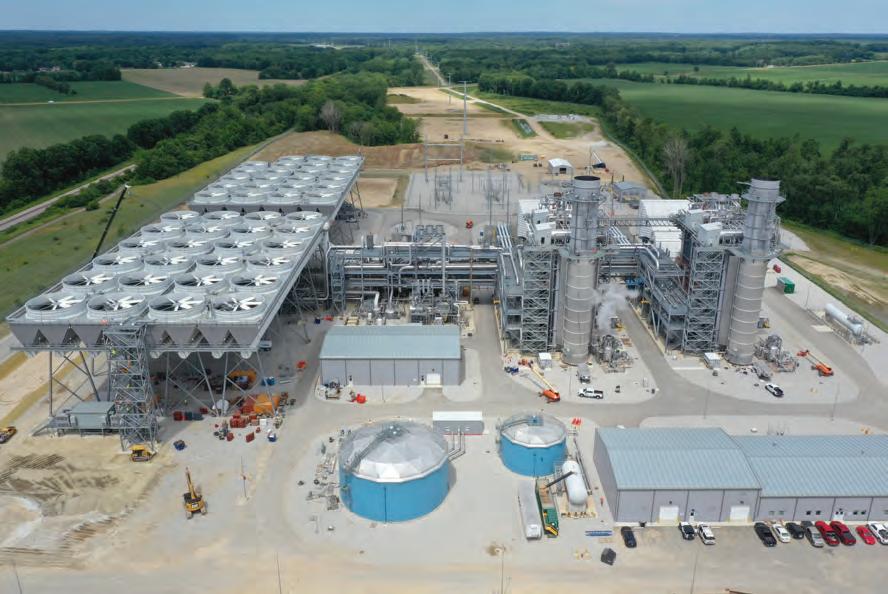
The plant achieved the start of operation safely, with the highest standard of quality, and delivers approximately 1.1 giga watt of electricity, the equivalent output needed to power approx imately 635,000 US homes and businesses.
Through a contract with Kiewit Power Constructors, the engineering, construction and procurement contractor, GE provided H-Class combined cycle plant equipment to Indeck Niles and is expected to provide parts, repairs and maintenance

services for 25 years. Indeck de veloped the plant to fill the need for generating resources created by the decommissioning of old er, costly and/or less-efficient coal-fired and nuclear plants in the region.
The plant, built by Kiewit, includes all major equipment supplied by GE: two GE 7HA.02
gas turbines, powering two H65 generators, an STF-D600 steam turbine powering a H84 gen erator, and two Heat Recovery Steam Generators which are tri ple pressure reheat drum, along with a Mark VIe Distributed Control System software solution and services to support the avail ability and reliability of the plant.
Rock Tech Lithium and Mer cedes-Benz announced that they are about to enter into an
Illumiti, a Syntax company, is a leading systems integration and management consultancy for SAP® technologies committed to delivering strategy, technology, and business transformation to ambitious clients. It is a leading implementer of SAP solutions in North America and an SAP platinum partner. Illumiti offerings include the full suite of SAP® SuccessFactors® solutions along with SAP® Business ByDesign®, SAP S/4HANA®, application management services, and cloud hosting.
digital economy is transforming lives at a whirlwind pace.
up with the right solutions for your business.
agreement which provides for a partnership to produce lithium hydroxide for the automaker and its battery suppliers.

Under the intended bind ing agreement, Rock Tech has ag reed to deliver up to 10,000 tonnes per year of its planned production to the manufacturer and its partners starting in 2026.
Mercedes-Benz aims to be come fully electric by the end of the decade. From 2025 onwards the car maker plans that all newly launched vehicle architectures will be all electric. To help make this a reality, Mercedes-Benz intends to enter a strategic partnership with Rock Tech, lasting for at least five years and an option to prolong.
Toyota is donating $100,000 to Canadian Red Cross to support relief efforts in affected Eastern Canada communities. Toyota Canada Inc., Toyota Motor Man ufacturing Canada and Toyota Financial Services are making the combined donation to the Cana dian Red Cross.
“With the Canadian Red Cross’ boots-on-the-ground approach, we know they’re the right organization to help the affected communities as quickly as possible,” said Darren Cooper, president and CEO, Toy ota Financial Services. “It’s a long road ahead but, with the collective efforts and support of Canadians from coast to coast to coast, we know our friends near Atlantic Canada will make a full recovery.”
The Canadian Red Cross is cur rently on the ground and working closely with community leaders to provide emergency humanitarian assistance.


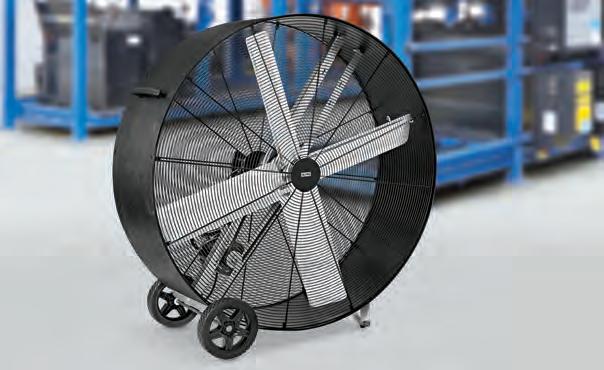
Blackline Safety announced a $2 million deal with Coventry, England-based Severn Trent Water, for connected personal gas detection devices to protect its employees and support digital transformation.

Blackline Safety will protect more than 10,000 workers across six of the 12 UK water and waste water authorities that now use Blackline’s technology.
Severn Trent began the deploy ment of the first 1,650 Blackline G7c wearable devices. The water
authority will soon replace their existing gas detection units with more than 2,600 Blackline Safety G7c wearable devices and associ ated services.
Blackline’s G7 lone worker and personal gas detection devices detect gas hazards, instantly no tify workers and managers in real time, enable contact tracing and corrective action to be taken to mitigate future incidents.
The three-year investment, secured via Blackline Verwood, UK-based distribution partner Breathe Safety, includes an option to extend for an additional five years of service.
Visit www.plant.ca/news for more industry news and events.
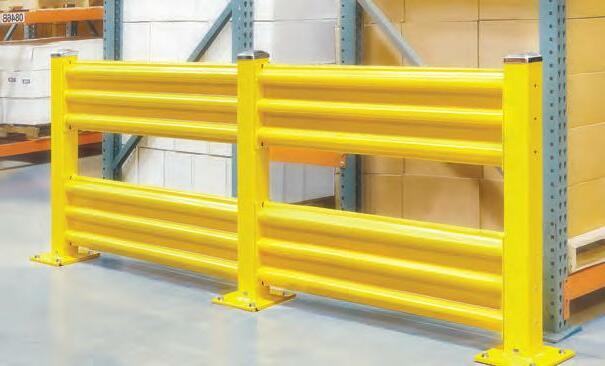
Manufacturers hoping to gauge their level of technological maturi ty may be hard-pressed unless they know what they are looking for.
For one, there is no set defi nition on what advanced man ufacturing is, but consensus is g rowing on a set of criteria, including being R&D inten sive, having a high percentage of the workforce employed in STEM-related occupations, being at the cutting edge of design and productivity, and displaying higher-than-average capital expenditures.
If manuf acturers are to level-set, the industry needs clarity on how advanced manu facturing is defined for specific contexts, says Brendan Swee ney, managing director at the Trillium Network for Advanced Manufacturing. This will not only go a long way in helping to determine Ontario’s—and
Canada’s—advanced manufac turing strengths but will also identify those industries that require more support.
At the very least, says Swee ney, advanced manufacturing involves “the successful achieve ment of business objectives by developing, producing, or adopt ing new and novel technologies.”

However, the criteria do not amount to a zero-sum game. “It is much more dynamic—what is advanced today might not be advanced tomorrow,” said Sweeney. “What is advanced in pharma might not be advanced in aerospace. What is advanced in furniture manufacturing, might not be advanced in ma chine building.”
Sweeney adds that technology can solve a particular problem, but it depends on the context. For example, in producing medical devices or robotics, the process of building the product may not be automated, but the
Manufacturers have clear aspirations to engage with Industry 4.0, but without knowing how or where to begin, they won’t realize their goals. BY PLANT STAFF
“I am seeing a page turn, where there’s more interest in buying more automation in Canada. I think it’s due to the changing of the guard from the Baby Boomers to a younger generation of project managers and technical specialists.” - Ben Whitney
medical device or product may be extremely advanced. Similar ly, some processes are extremely advanced and highly automated, as in the case of a plastic bottle manufacturer that manufactures two billion plastic bottles a year.

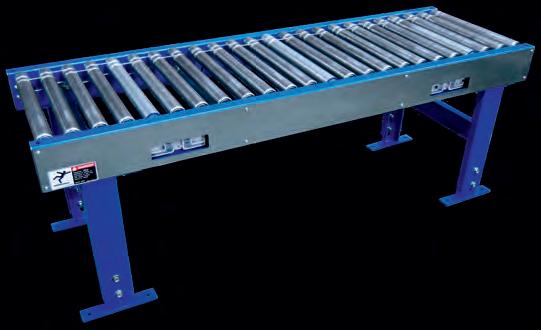
According to the Trillium Network, ESG (environmental, social and governance) practices should be part-and-parcel of the definition. “If you’re really harmful to the environment, then you’re not advanced, and if you have no intention of diversi fying your workforce in a place like Ontar io, then you’re not advanced,” said Sweeney.


The criterion of contribut ing to society is an appeal to advanced companies to be pur poseful beyond their own pock ets. “That could mean that we’re moving away from an internal combustion engine to an electric vehicle that is for the better of the environment,” said Sweeney. Other industry examples include healthcare (making vaccines, PPE); food security (“Could we kill chickens more humane ly?”), or “Can we improve safety protocols so that workers don’t get COVID?”.
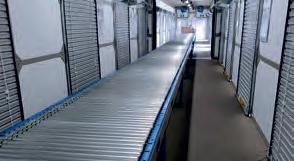
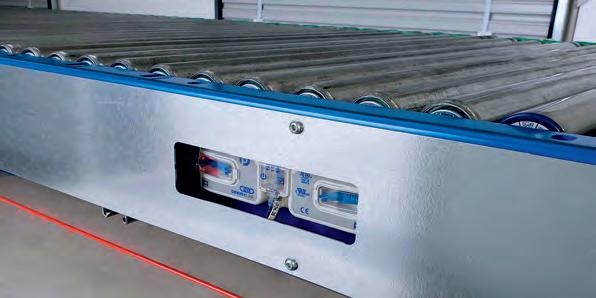
For Sweeney, adding a con dition for paying workers a de cent wage is also fundamental. “Did you know that the average hourly wage in Ontario is $30?” he asks. “There’s an owner of a machine shop in St. Catharines, Ont., whom I love to quote: ‘If it’s your first day at the shop and you’re 18 years old, the job might only be worth $18 an hour. But by the time you’re 30, I must get you $30 an hour, or else you’re leaving for my competitor.’ So, pay well.”
Like Sweeney, Walter Garrison points out that levels of engage ment with emergent technolo gies differ with every company, its manager s, and the overall understanding of the technology.
As a former advanced man ufacturing business integrator for the City of Mississauga economic development office, Garrison has observed how man ufacturers, particularly smalland medium-sized enterprises (SMEs), struggle to adopt new
technologies, unless they are well capitalized. “For one, they have to understand how to success fully research the technologies that are out there, how to test those technologies and how to implement that technology,” said Garrison.
Beyond a manufacturer’s own capabilities, understanding the local landscape and the manu facturing ecosystem matters a g reat deal, suggests Garrison.
“Those companies that had headquarters elsewhere, but had a location in Mississauga, were competing with other jurisdic tions for work packages,” he said. “If they were able to demonstrate superiority at workplace efficien cy, that would make all the dif ference. As far as being engaged with IIOT and Industry 4.0, I certainly think those companies that monitor national trends and are focused will get their direc tives from the global HQ.”
Compared to the GTA, On tario and the rest of Canada, Mississauga has no shortage of automation companies. “There certainly are examples in the city of world class manufacturing, where Industry 4.0 has been well adopted and companies contin ue to push the envelope,” he said. “Systems integrators, seem to be more in Cambridge area, and sometimes in Vaughan.”
Manufacturers whose clientele have international scope need to be at the leading edge of inno vation and how efficient their production practices are, says Garrison. “You’ll see robotic arms in operation, but you’ll see an understanding and a mindset that is well thought out before they integrate that process into complex industries like aero space or defense,” he said.
There’s no question Missis sauga’s growth can be partly attr ibuted to its proximity to To ronto. Malton, a neighbourhood in its nor theast end, is home to Toronto Pearson International Airport—Canada’s busiest air port—and the site where many multinational corporations locate their headquarters. Man ufacturing companies gravitate to the area because it is located
between Toronto and Waterloo, Ont. (The Toronto-Waterloo Corridor is the largest tech clus ter in North America outside of Silicon Valley.) Garrison also describes the city as a hub for engineering talent.
“The idea that Mississauga is a bedroom city is a thing of the past,” said Garrison. “In fact, immigration, which was halted in 2020 and to a certain extent in 2021, is picking up again. A lot of people coming into the city are skilled and highly qualified.”
Ben Whitney, president of Armo-Tool and Abuma Man ufacturing, agrees that Canada has a smar t, engaged workforce. He points out; however, that manufacturers in this country generally lag the U.S.
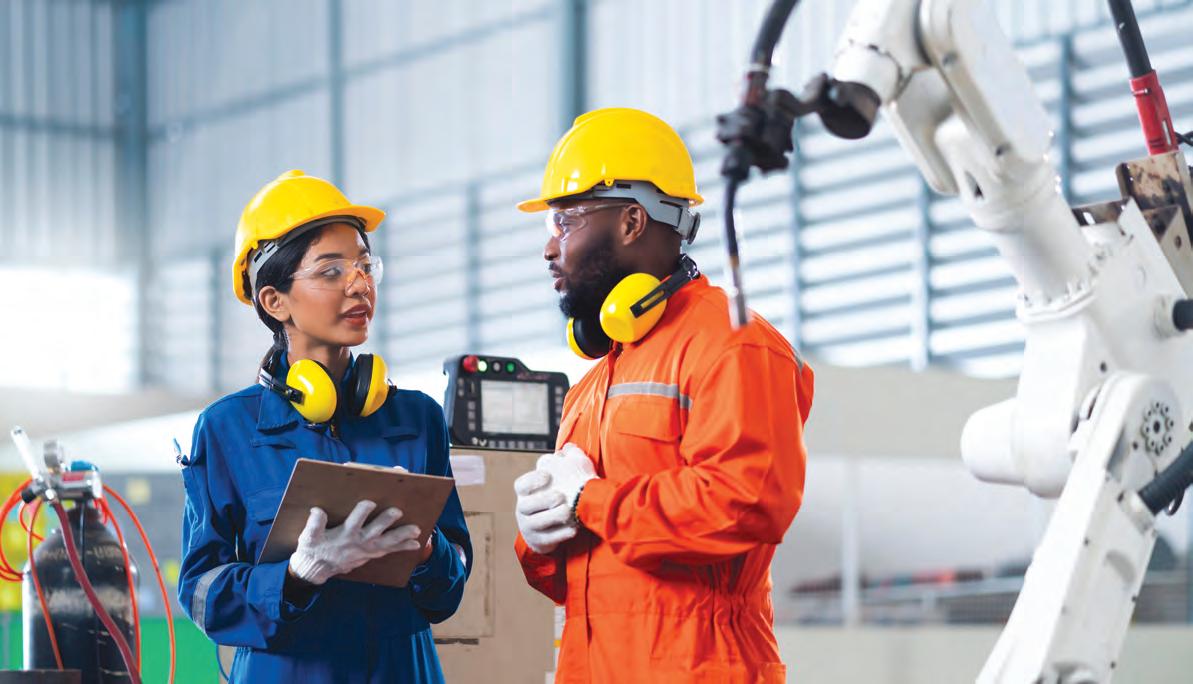
For Whitney, there is an op portunity for SMEs to capitalize o n. “With smaller plants, it’s hard to have the right people,” said Whitney. “But it’s a good time now with the labour short age and the blessing of the smart
people that we do have to spend a bit of money and turn people loose on feeling out what’s the right solution for us.”
The same prospect extends to branch plants, he says, where there may be an opportunity to take on a project that corporate views as a little bit risky. “At a smaller plant in Canada, we can devote the resources and turn our selves into the test sites for some of these [emergent] technologies. We can take the opportunity to go first, rather than being the
laggard in some of these strategies and technologies.”
Based in London, Ont., Ar mo-Tool has a unique vantage that allows Whitney to steer both technological and process inno vation. The privately-held, fam ily-owned company was started in 1969 by Whitney’s father as a precision grinding and coating shop. The outfit expanded over the years to include progressive and transfer stamping dies, tool ing, and automation, particularly for the automotive industry. In
2017, the company acquired Abuma, which specializes in low volume, high quality steel and aluminum fabrication.

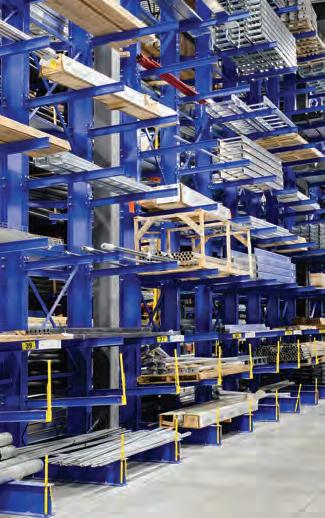

“We were able to take the stainless-steel fabrication ex pertise of Abuma, plus Armo Tool’s robotics automation experience, to approach some new industries,” said Whitney. “Traditionally, Armo-Tool served a lot of automotive busi ness. However, with some of the new capabilities, we’re able to diversify to food and beverage, and consumer product assembly and packaging.”
Still, achieving a ‘true’ In dustry 4.0 assembly line model in a f acility characterized by ‘single machine automation level complexity’ can be diffi cult, admits Whitney. “A lot of what we’re trying to do is get more live information into the hands of more people—which isn’t exactly Industry 4.0. It is machine data sharing. In our process the people are the pro ductivity machines, and the goal is to make sure that they have the information they need all the time to make good decisions.”
In recent years the company’s investments have focused on ed ucating the team of 180 members and working together to coordi nate activities, particularly once routines were disrupted through the pandemic, said Whitney, who mentions there are a lot of hidden opportunities to be had from a small investment in data. For instance, Armo-Tool uses the ser vices of FreePoint Technologies, a developer of machine monitoring software to monitor its CNC equipment. “By doing that we are able to identify what a lot of root causes are of, not necessarily downtime, but of non-productive time,” said Whitney.
The appetite for machine monitoring is evident across the industry. “There has always been a ton of data in the machin ery, but it wasn’t actionable,” said Whitney. “And it wasn’t getting into the right people’s hands in a timely fashion. Now that the machine can be tied directly back to the work, one can monitor the true causes of scrap, and track the causes of downtime and do all kinds of great analyses.”
A lesson in contrasts Garrison, Sweeney, and Whitney agree that the challenges of the day can be overwhelming, es pecially for manufacturers who are hesitant to make feasible technology improvements.
The restraint is never more pal pable than when Whitney com pares underlying trends and the behaviours of his U.S. and Mex ican customers—especially with respect to the level of technology
they require for solutions. “Cana dian customers oftentimes want the same machine from 10 years ago, with little advancement as possible,” he said.
In contrast, Mexican custom ers, that tend to have younger technical workforces and young er leadership, want new technol ogy and tend to order the most cutting-edge machine possible.
“To me, that’s really exciting and has strengthened opportunities for
them,” said Whitney. “In Canada, sometimes we do that. However, I am seeing a page turning, where there’s more interest in buying more automation in Canada. I think it’s due to the changing of the guard from the Baby Boomers to a younger generation of project managers and technical specialists. I also think that with the labour shortage, there’s more interest in doing a more ambitious project from our customers in Canada.”
Recently, Plant conducted the 2023 Advanced Manu facturing Outlook survey, which measured advanced manufacturing (IIoT and Industry 4.0) among respondents in the manu facturing industry who are senior de cision makers. The research was conducted by R.K. Insights, earlier this year for Plant Magazine and Ca nadian Manufacturing Online.
In addition to the survey, Plant conducted a roundtable with indus try experts, to gauge their reaction to the results, and discuss the future of advanced manufacturing.
Combined they looked at advanced manufacturing adoption, digitali zation, processes, financing, cyber secur ity, data collection, and training. They also looked at which technol ogies are being invested in, and how those technologies will be used.
per cent of respondents have undertaken measures to protect their company against a cyber-attack.
“When we talk about retaining talent where you have a generation of millen nials that use technology for anything and everything, it is a challenge to ask those very same people to file an ex pense excel spreadsheet manually,” said Krishan Chauhan, director of business operations, Canada, Sap Concur.
97IIoT adoption and investment IIoT adoption is increasing slowly, as we saw 26 per cent of respondents ap plying IIoT capabilities this year (up from 24 per cent in 2020), while an other 26 per cent are in the process of evaluating its relevance to operations, and a further 14 per cent have a plan and are investing in technology for deployment in next 12 months. Only 20 per cent said they are not familiar with IIoT capabilities (down from 24 per cent in 2020), and 14 per cent said it is not application to them.
“The last couple of years has taught us that we should be very concerned about companies, large and small, that aren’t making investments in technol ogy. If you look at who’s disappeared dur ing the pandemic, and those still around, they are the ones who have invested in technology,” said Dennis Dussin, president, Alps Welding. “I don’t see how you can be competitive, have effective processes and serve customers in today’s environment if you’re not making those investments. The number of people not concerned should be in the single digits, close to zero.”
For companies that are not invest ing in IIoT, the main reason cited was the technology was too costly (33 per cent). Followed by difficulties integrating advanced technologies into existing systems (30 per cent), lack of skills to support investment
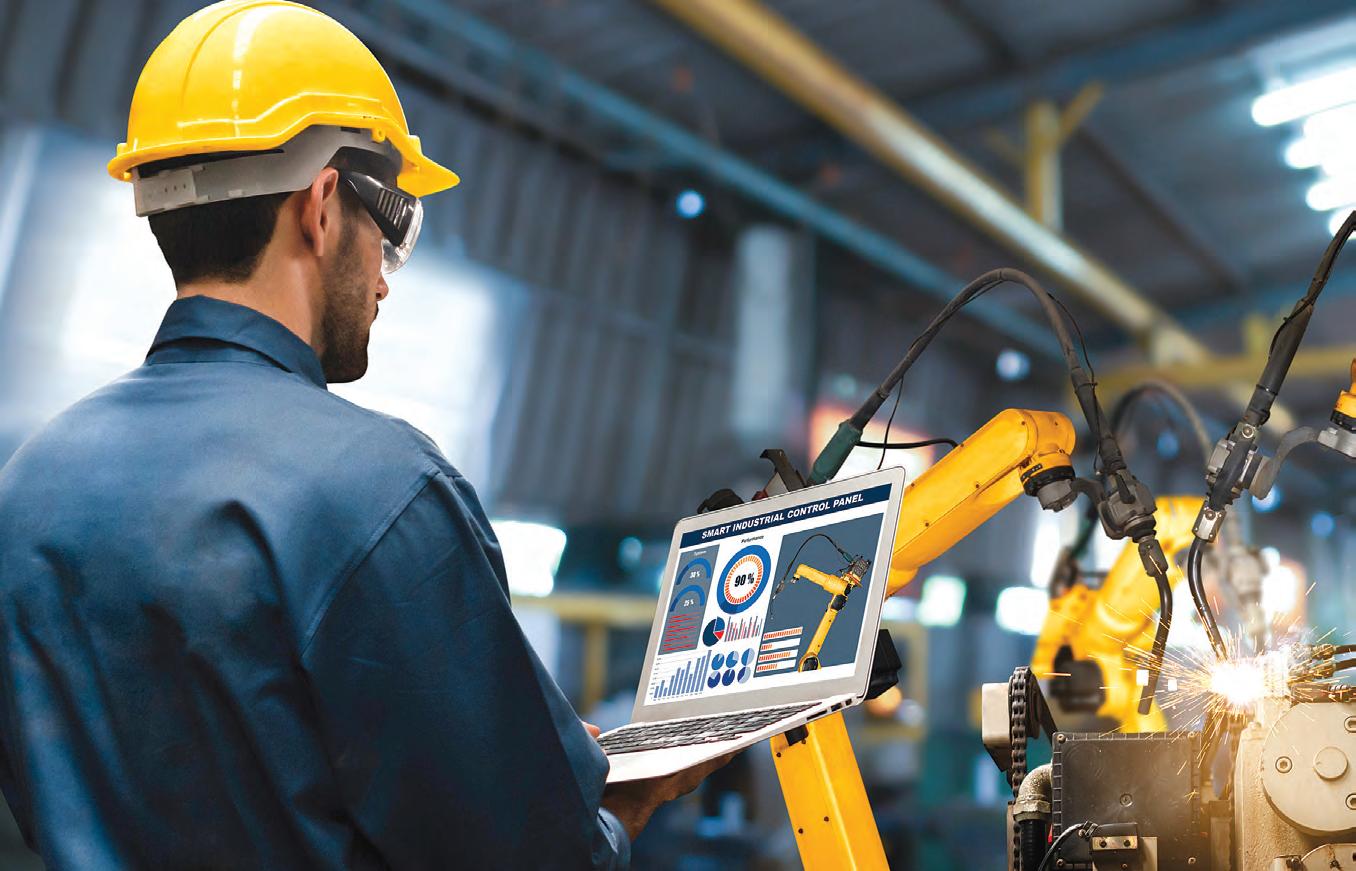
Advanced manufacturing, IIoT, Industry 4.0, technology, no matter what you call the next generation of manufacturing, it is here, and you need to know about it.Photo: ©Blue Planet Studio/Adobe Stock
(27 per cent), uncertainty, risk, and disruption (23 per cent), lack of fi nancing and support (20 per cent), among others.
“Make sure that IoT is giving you the type of data to make decisions, and as soon as you’re not making them, you’re operating your business the way you have in the past, based on natural trends of what they’re used to for the past 25-30 years,” said Hussam Malek, partner, consulting, MNP. “The prob lem is those trends have changed dras tically, now being a global competitor and globalized environment, not hav ing that information and data, is really going to impact losing clients, but also affect your profitability it is going to come down drastically, not being able to control them.”
Conversely, what happens to those companies that do not invest in IIoT? Companies are worried, with 18 per cent ‘very’ and 53 per cent ‘somewhat’ concerned for their companies if they do not invest in IIoT; with 22 per cent not very concerned, and six per cent not at all concerned.
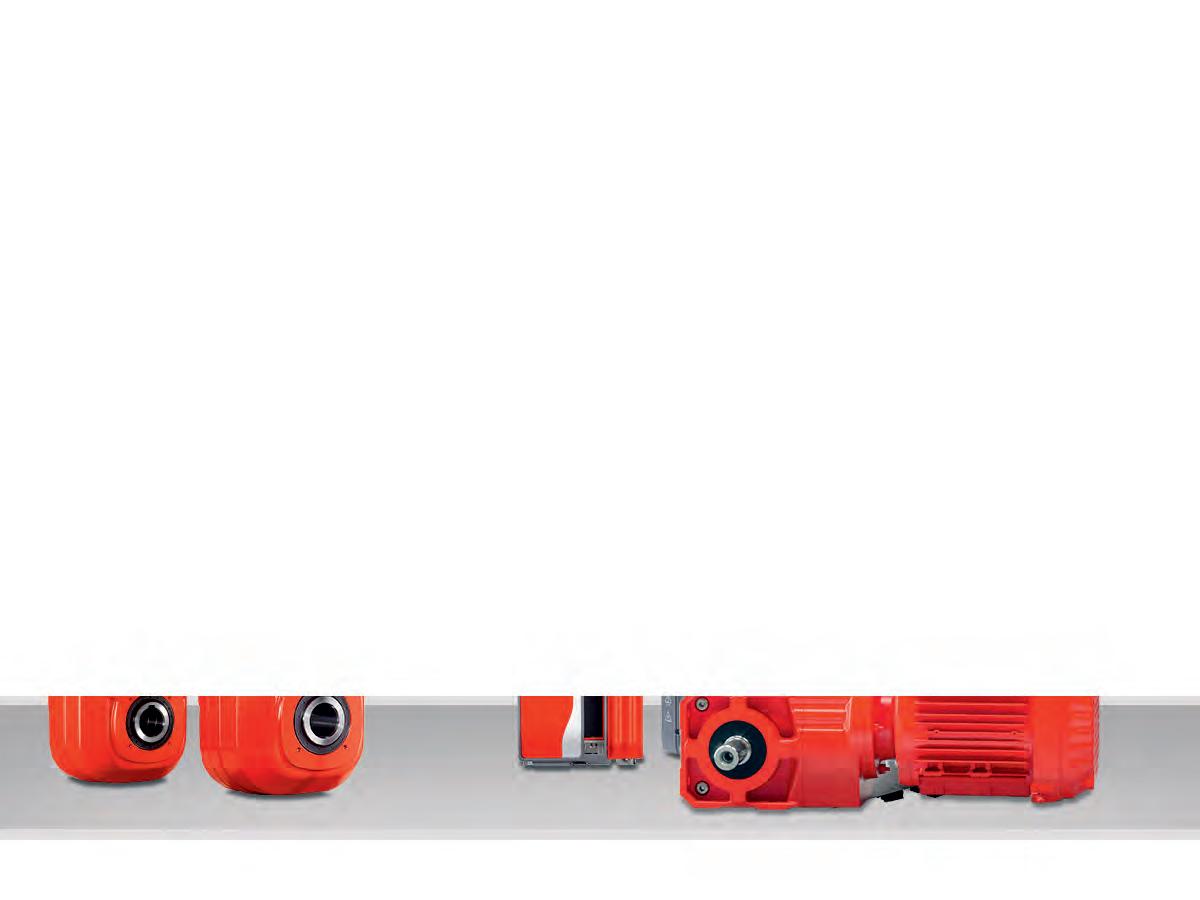
“Losing employees and not being
able to attract younger people into your workforce is a major concern,” said Jayson Myers, CEO, NGen.

“Younger people coming into the advanced manufacturing workforce are expecting companies to be up-todate in terms of the technologies they are using.”
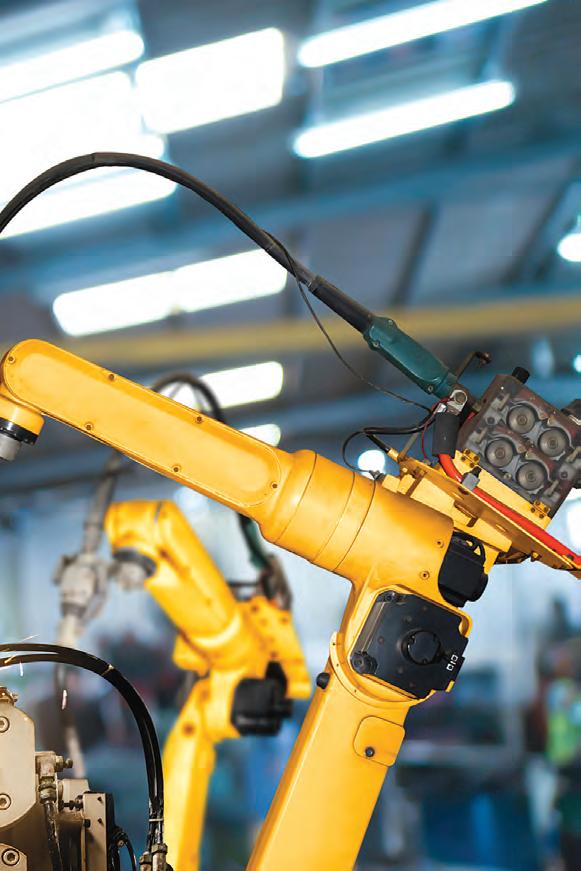
The survey found that 56 per cent of respondents mentioned having experi enced a cyber-attack or breach at their company. Overall, 41 per cent had a phishing attack, 14 per cent had a data breach or loss of proprietary data; per sonal or financial information, 14 per cent had a breach through a third-par ty vendor, among others. That leaves a whopping 44 per cent who said they had no breach or attack.
“More than half of companies are blissfully unaware that they’ve suf fered an attack. These numbers are measures of delusion. The idea that a piece of open-source code is buried in systems, and in some cases down in layers that were never even designed to have a regular update cycle has caught


companies off guard,” said Peter Coffee, VP for Strategic Research, Salesforce. “If this wasn’t a wake-up year, I don’t know what will be.”
How do you avoid a cyber-attack? One of the most important tools is to educate the company’s workforce on how to avoid getting scammed in the first place. This is especially true for more sophisticated attacks. It is reas suring to see that 97 per cent of respondents have undertaken measures to protect their company against a cyber-attack. Of those 70 per cent have a security infrastructure, 52 per cent have taken on a cybersecurity risk assessment/review, 46 per cent had a cybersecurity strategy, 44 per cent have data privacy controls, 33 per cent have a cyber breach response plan, and 23 per cent have crisis management procedures and/or a busi ness continuity plan.
“Our inter nal pulse data shows that careless, untrained, or unaware employees are the top source of vulnerability for most firms. With employees, it’s not just a tech nical vulnerability, but potentially socially e ngineered ones, manufacturers should look out for. This is where attackers are using technology to gather sophisticated informa tion on companies and individuals, then
using that information to engineer access by contacting the company directly and fooling people into opening the gates,” said Scott McNeil-Smith, VP of manufacturing sector performance, Excellence in Manufacturing Consortium (EMC).

“This can include pretending to be cus tomers, suppliers, and service providers, to access financial, IP and other information, to redirect payments or enable further, more comprehensive cyber-attacks. It’s getting harder to tell the difference between real and fake, so having cybersecurity procedures in place that includes educating staff, and poli cies for access and monitoring controls, and maintaining and testing back-ups is vital to protect against what could happen if some thing does hit the fan.”

When we asked how companies are apply ing IIoT, we found that organizations are improving efficiency/productivity (43 per cent), providing more visibility into pro duction processes (28 per cent), improving maintenance functions (28 per cent), ana lytics functionality (24 per cent), tracking mater ials, shop floor assets (23 per cent), tying in business data from shop floor to top
floor (20 per cent), developing new services/ revenue streams (14 per cent), consolidating control rooms (14 per cent), and developing smart products (12 per cent).
“What I’ve heard a lot is the “where do we start” and having that strategic score card is critical to this, so you could go into a plant that has 10,000 pieces of equipment, or a plant that has 50,000, and for both, under standing the production critical equipment
As disruptions in today’s manufacturing landscape
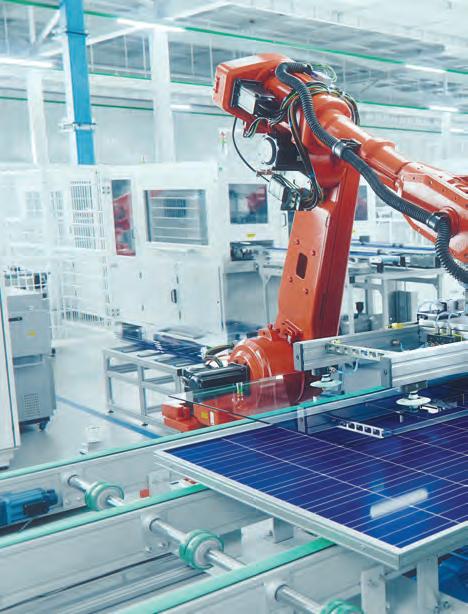
it’s more important than ever to develop carefully targeted strategies. From leveraging datadriven tax planning, accounting and assurance solutions,
industry
to identifying savings
and having a score card will help determine where to start,” said Kristina Sturek, direc tor, US projects, Illumiti. “It’s important to step back, and look at your critical areas, throughput challenges, and equipment avail ability, and then assessing these areas. What is it that we want to measure, what do we want to improve, where do we need our cost savings and improvements? Then choose that one area based on the analysis and reliability
assessment, that is where your pilot should start, after a period of six to 12 months your business case will write itself, you are going to see the cost savings by increasing your equipment uptime, reducing wrench time, reductions in materials and overtime costs, especially with predictive maintenance. ”
It is good to see that most respondents are seeing a benefit from using advanced man ufacturing. In all, 78 per cent said they saw a benefit, with the most common benefits mentioned by respondents being increased throughput (38 per cent), reducing downtime (36 per cent), increased quality of product (33 per cent), product innovation (23 per cent), reduced staff requirements (20 per cent), among others.
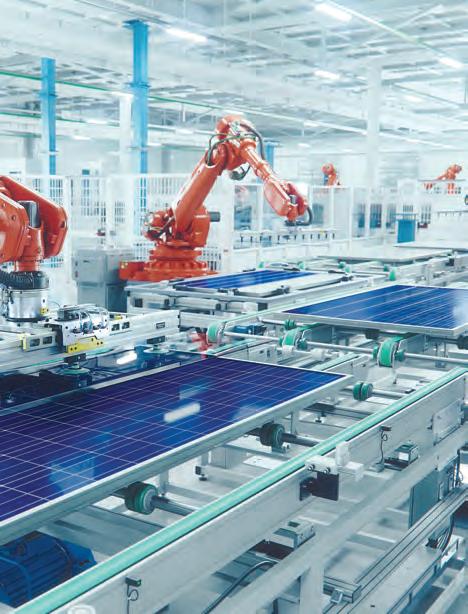

All companies collect data. We live in a world of data, if you have an electronic device, it is collecting data of some sort. However, while the data is being collected, often that data is
not fully utilized for its benefits. While dif ferent areas of a company may have specific data, they may only keep data within that area, and not share it with the whole organi zation. What we found was that 96 per cent of respondents said that sharing data would benefit the whole organization.



“For us, having just gone through an ERP system upgrade, and understanding that the raw information that’s coming out of it isn’t going to be a benefit to every employee. Therefore, creating tools to analyze that data has allowed us to create tools that automate people’s decision making,” said Stephen Loftus, CEO, Innovative Automation. “It’s another step in the automation process, the data is allowing us to make those decisions, no different than any person analyzing that data making the decision.”
Mario Cywinski is the editor of Plant magazine, MRO magazine, and Food and Beverage magazine, contact him at mcywinski@plant.ca..
Manage your cashflow, not uncertainty, with Concur Expense—the world’s leading expense management solution trusted by over 51,000 businesses of all sizes.

“It’s important to step back, and look at your critical areas, throughput challenges, and equipment availability, and then assessing these areas.” -Kristina Sturek
Labour shortages are prompting many busi nesses to jump into solutions using auto mation as a replacement. Indus try 4.0 is no longer a novel concept to businesses. A lot has been written about Industry 4.0, which has triggered automation technologies to evolve regularly to transform how facilities oper ate day-to-day.
Businesses must fir st under stand their own business and processes, and then plan what needs to be changed before au tomating and transforming.
When f acing pressures to satisfy customers it is crucial to pause and reflect, you may not have the time to do it, you also cannot afford not to if you want a successful outcome.
I still am convinced that the best methodology to document, observe, reflect, and strategize your business processes is by participating in a facilitated en terprise value stream workshop. Indeed, many practitioners start using value stream mapping, which is good, but it only iden tifies ‘waste’ through the lens of inventory. Enterprise value stream mapping allows you to analyze your information flow in a granular manner seeing just how complete and accurate your information flows are. Ul timately the map allows you to look at your business in a holistic manner, be honest with yourself during the mapping exercise and document accordingly.
The most critical time within your business is the first hour and the last hour. It is indicative of how quickly the process be comes effective and how easy is
it to retire at the end of the day.
Variability is the cancer of any process, and we need stability of process before we can even con sider any form of automation.
While I walk and observe pro cesses, in the back of mind is the question, “would I want my child to perform this function or make it into a career?” If the answer is no, then that process becomes a potential viable candidate for automation. For example, White Castle is now employing “Flippy” an automated kitchen assistant which allows kitchen technicians to perform other tasks more tailored to creating that positive customer experience.
Before your enthusiasm cre ates an impulse to automate you again need to pause, look deep at the process and then sim plify, and ponder automation. Simplification does not have to be an advanced science; it can consist of a simple workplace
organization (remember robots are not good at searching). Sec ond, a proper material convey ance and replenishment (develop a cadence) and finally, a great opportunity to translate ‘tribal knowledge’ into a quantifiable repeatable operation.
“I fear a recession, a downturn in business and losing the employees I currently have ...”
All are valid concerns so let us demyth. Recession and a downturn in business are bundled together. Business runs in cycles and only those with the vision, tenacity, and commitment to see through to next cycle will ultimately be the industry winners. When times are slower it provides more time to implement automation, recover from mistakes and ulti mately achieve stability within the process. Once stability has been accomplished in your new process it is easy to speed it up.
Employees are yours to lose.
There is no doubt that the advent of automation will change jobs and lives. It becomes important to how you manage the speed of adoption within your organization. Encour age your employees to learn new skills and capabilities, so they can continue to be a valuable resource to your organization. As you invest in automation, make sure you are also investing in your people, they deserve it.
As you look to embrace automa tion you will need an automation par tner. Don’t jump on the first opportunity, be just as diligent with selecting a collaboration partner, as you would in selecting a new employee. Ultimately, their influ ence and impact could transform your business with an ever-lasting impact. Collaboration is a suc cessful strategy for organizations to become nimble, and nimble companies unlock new value for themselves and customers.
As you embrace Industry 4.0 be sure to reflect Do an enterprise value stream workshop; simplify; look at your operations to simplify, obsolete or automate as if it is your child doing the work; be strategic, build your vision and strategy despite storm clouds on the horizon; respect your people, skills will need to be shifted for Industry 4.0; and cautiously select a collaboration provider.
The embrace of Industry 4.0 should be met with an innova tive approach while integrating legac y systems with automa tion to enhance being nimble and competitive.
Richard Kunst is an author, speaker and seasoned lean practitioner based in Toronto, who leads a holistic practice to coach, mentor and provide management solutions to help companies implement or accelerate their excellence journeys. You can reach him at
Before your enthusiasm creates an impulse to automate you need to pause, look deeply at the process, simplify, and then ponder automation.
“Would I want my child to perform this function or make it into a career?” If the answer is no, then that process becomes a potential viable candidate for automation.

Consider whether your sales strategies are sufficient to catch and retain the attention of today’s younger buyers. BY SHAWN CASEMORE
In a recent economic update, the host, a highly regarded Canadian economist, shared that the Cana dian market is now near the peak of its economic recovery. Alternatively, the U.S. is still in its early days.
This might not seem like a big deal if you’ve struggled to match supply with de mand. However, it suggests that demand may be slowing, at least here in Canada. There is one way to protect yourself from a possible economic downturn, and it begins and ends with sales.
However, if you’ve been holding back on assertively selling during the last 12 to 24 months, you might be in for a surprise. The
labour shortage impacts sales professionals as it has many other professions, but it ex tends beyond talent.
In my latest book, The Unstoppable Sales Machine, I dedicated an entire chapter to discussing how buyers who seek products and services have changed. Putting feet on the street and selling to sell is no longer ef fective. Sure, you’ll get the odd meeting, but
overall, a demographic shift is changing how buyers buy.
Once keen to meet, baby boomers who were still working in 2020 took the pandemic as an opportunity to retire, replaced by young er, more technologically savvy buyers. A study by the Federal Reserve of St. Louis suggested that 2.6 million more baby boomers retired during the pandemic than expected.

Younger generations replacing those baby boomers have an increased desire to solve their problems. A Gartner study conducted in December 2020 found that 62 per cent of Millennials and 75 per cent of Generation Z referred to sources such as Google and YouTube to solve their problems.
The Bay of Quinte Region is home to a large cluster of manufacturing facilities including many well-known multi-national corporations. Strategically located, the region is known as a prime Canadian logistics and manufacturing hub that provides fast access to major Canadian and US Markets.
To learn why manufacturing works here and what is Proudly Made in Bay of Quinte, visit madeinquinte.ca
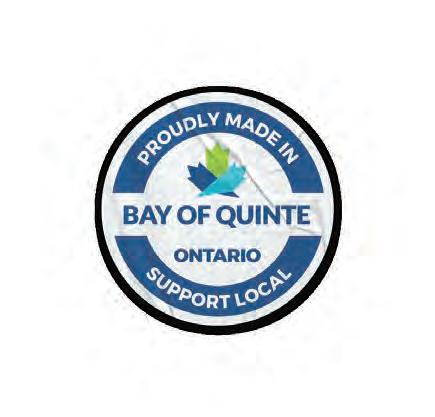
The labour shortage impacts sales professionals as it has many other professions, but it extends beyond talent.
Another study by Gartner suggests that nearly 50 per cent of a buyer’s time is spent researching before engaging with sales. We have younger generations in the seats of the people we used to sell to, and they don’t want to spend an afternoon on the golf course dis cussing business.
Fortunately, there are solutions you can introduce that turn the tables in your fa vour and help you to accelerate sales in this new market.

1. Have an active digital presence. If you have an outdated website, then you might as well have no website.Your digital presence is your calling card, the number one way buy ers will ‘assess you from afar’. Update your existing website with current and valuable information. While you are at it, add a live chat feature, that your inside sales staff can use during regular business hours, engaging with site visitors to respond to questions.
2. Include social selling as part of your sales strategy As of this writing, LinkedIn has 830 million members in over 200 coun tries. If you want a window into new selling oppor tunities, your sales team, executives, and company should be active on LinkedIn.


Even the non-premium (no-cost) version of LinkedIn provides a window of opportunity to find new prospects and referral opportuni ties and can offer the ability to connect with almost anyone.
3. Empower your customers to buy. For example, if you stop by the Tesla website, you can select a car with options and features within minutes and purchase. You might not think your product or service can sell on the Internet, but unfortunately, you’d be wrong. Get creative about using your web site to collect deposits, advance payments,
or even the entire product or service. Online payment has become a normal behaviour, so take advantage of the opportunity to improve your cash flow, reduce paper and (most im portantly) get ahead of your competition.
4. Focus on adding value. From the first interaction a prospect has with your compa ny, be it your website, meeting someone at a trade show, or even if they are to stop by, and the entire experience must engulf them in value. In the highly transactional world that we live in, adding value is a simple way to get your prospects thinking, “if I get this much value and haven’t made an investment yet, what will I get when I do?”
Whether the economy remains at its cur rent level or slows isn’t the question you need to consider. Instead, consider whether your sales strategies are sufficient to catch and retain the attention of today’s young buy ers. When you do this, you’ll position your company to withstand whatever the future might hold.
Shawn Casemore is keynote speaker, consultant, and author of three books, including his latest book, The Unstoppable Sales Machine. To learn more about Shawn and his work, visit www.shawncasemore.com.
Creform® flow racks. A simple, yet effective way to ensure that manufacturing runs at peak performance. Built for ergonomics, efficiency and FIFO inventory management, each incorporates flow lanes and levels to present containers and parts at assembly stations, machine loading points and for other material handling applications. When used in combination with workstations, carts and AGVs, Creform flow racks are an integral part of the systems approach to industrial material handling.
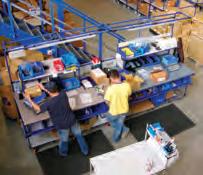
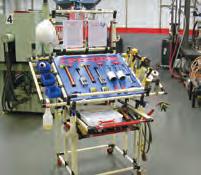

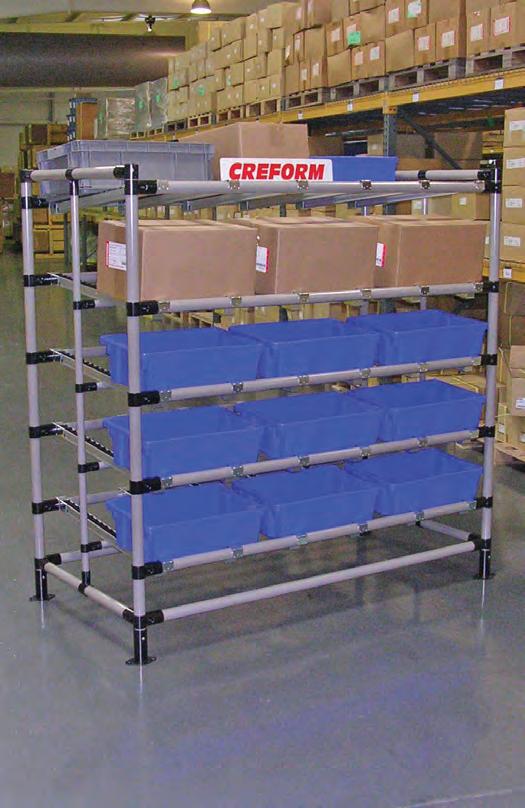
Create other economical, flexible, reliable structures and AGVs.


 BY CANADIAN CENTRE FOR OCCUPATIONAL HEALTH AND SAFETY
BY CANADIAN CENTRE FOR OCCUPATIONAL HEALTH AND SAFETY
When chemicals are used, stored, or generated in the workplace, there are unique hazards. Some have properties that make them an im mediate safety concern, such as explosive, flammable, and corrosive chemicals. Others cause adverse health effects on our organs and body systems. Adverse health effects may re sult in occupational diseases ranging from contact der matosis to cancers.
Over the last several decades, research has helped us better understand why certain ill nesses are common in certain occupations. It has also led to advances in preventing occu pational disease through the implementation of control measures, like using alternative chemicals that are less harmful.
Each workplace is unique. Employers have a responsibility to recognize the hazards by identifying all chemicals that are used, stored, handled, and generated in their workplace. They must also assess the risk of exposure to chemicals for their specific workplace, con sidering both the likelihood and severity of the exposure. These risks will depend on the chemicals present, the type and duration of the tasks being performed, the work environment, and other workplace-specific factors. Once risks are assessed, they must implement appropriate control measures following the hierarchy of controls (more on this below). In some situations, additional information such as occupational hygiene monitoring is needed to assess the hazard.
Understanding routes of exposure is anoth er key part of the risk assessment. Inhalation is the most common, followed by contact with skin or eyes. Unintentional ingestion can happen if food, hands, or cigarettes are con taminated, workers should never drink, eat, or smoke in areas where they may be exposed to chemicals. Injection is a less common method of exposure, occurring when a sharp object punctures the skin and injects a chemical directly into the bloodstream. Regardless of how the chemical gets into the body, once inside it is distributed by the blood stream. In this way, the chemical can harm organs, which are far away from the original point of entry, and where it entered the body.
In some cases, it may be years between the
time of exposure to the chemical and the de velopment of a disease. This time is known as the latency period. Many occupational diseases have longer latency periods – they tend to be detected after prolonged exposure over time, making it challenging for researchers to track and study the effects of individual chemicals.
After the hazards and risks of chemicals have been identified and assessed, appropriate con trol measures need to be put in place to protect workers. It is important to control the hazards by considering the most effective measures first, also known as the hierarchy of controls.
Elimination and substitution are the first and most effective control measures in the hierarchy, which involve removing the hazardous chemical from the workplace or replacing it with a less hazardous one. If elimination or substitution is not feasible or if there is remaining risk, the next most effec tive measure is engineering controls. These include design updates or modifications to plants, equipment, ventilation systems, and processes that reduce the source of exposure. Administrative controls, the third most effec tive measure, alter the way the work is done, including timing of work, policies and work practices. Work practices involve standard operating procedures such as housekeeping, equipment maintenance, personal hygiene practices, workplace-specific procedures, and training. It is critical that employers provide education and training about the potential hazards of the products and how to work with them safely. Training should cover safe work practices, procedures first aid measures in case of exposure, and how to respond to spills.
The last control measure to consid er when other controls are unable to adeq uately protect workers is personal protective equipment (PPE).
Workplace hazard control should be overseen and implemented by qualified individuals, and in consultation with health and safety com mittees or representatives, supervisors, and workers. It is also important to always follow the requirements of the applicable occupational health and safety legislation, fire codes, building codes, standards, environmental regulations, transportation of dangerous goods (TDG) regulations, and industry good practices.
When developing procedures for proper storage and disposing of a chemical, follow the recommendations from sections seven and 13 of the Safety Data Sheet (SDS), along with any regulatory requirements, standards, and codes for your jurisdiction. Ensure all containers are clearly labeled to avoid misuse or incidents.
When working with a chemical, make sure the necessary controls are followed to limit exposure, as outlined in your workplace’s pro cedure for the specific chemical and task. This will include requirements for ventilation, prop er storage and disposal procedures, and the kind of PPE that needs to be worn. Encourage workers to report any concerns to a supervisor. They can also speak with their health and safe ty committee or representative for guidance on how to work safely with chemicals.
The Canadian Centre for Occupational Health and Safety (CCOHS) promotes the total well-being — physical, psychosocial, and mental health — of workers in Canada by providing information, advice, education, and management systems and solutions that support the prevention of injury and illness. Visit www.ccohs.ca for more safety tips.
Employers have a responsibility to recognize the hazards by identifying all chemicals that are used, stored, handled, and generated in their workplace.Photo:

Rite-Hite announced an extension of its GuardRite line of in-plant safety barriers, the GuardRite Polymer Safety Barrier. Capable of stopping equivalent impact levels as its steel counterparts, the GuardRite Polymer Safety Barrier is made from scratch-resistant, impact-modified polypropylene, which allows it to

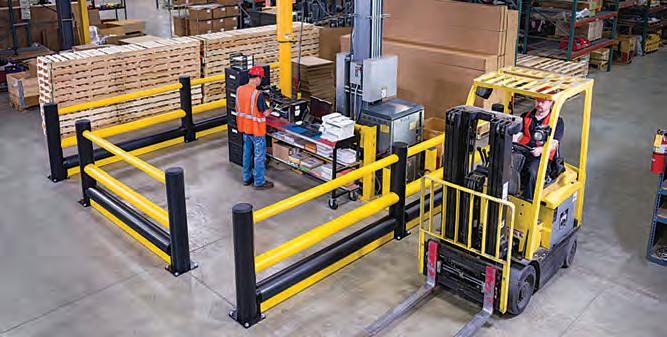
The GuardRite Polymer Safety Barrier comes in five models to accommodate specific applications to provide pedestrian, equipment, and product safety by clearly defining work areas, walkways, and storage areas. www.ritehite.com
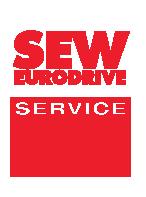
labour, materials, and time. Options available to tailor a Ledvance Link lighting control solution to the exact needs of the project. For new installations, there are net work-ready, connected luminaires. For retrofits, there are field install able, plug and play controllers, sensors, and accessories for a range of compatible luminaires. www.ledvance.com
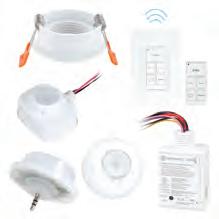

Acieta launches the FastARC CW cobot to complete welding tasks so
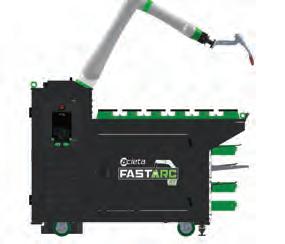
robot mounted on a mobile platform to move quickly between production areas. The system is compatible with Fronius, Lincoln Electric and Miller welding units. www.acieta.com

quality, USB Type-C connectivity, and a broader range of compatible media, including thicker paper and labels.
The PocketJet 8 series provides users with increased printing speeds, higher print quality for small font, detailed graphics, complex barcodes and QR codes, and simplified connectivity https://brothermobilesolutions.com
pressure pulsations and spikes. Added manual isolation and throttling needle valves isolate instruments from the sensed media, while block and bleed valves isolate instruments with the added ability to bleed off unwanted pressure. Both valves also allow for removal and maintenance of measurement instruments without shutting down the process.
https://www.automationdirect. com/pressure-sensors


SaperaTM Vision Software from Teledyne offers field proven image acquisition, control, image processing and AI functions to design, develop and deploy machine vision applications.
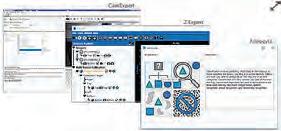
The new upgrades include enhance ments to its AI training graphical tool AstrocyteTM, image processing and AI libraries tool Sapera Processing. Sapera Vision Software is ideal for surface inspection on metal plates, location and identification of hardware parts, detection and segmentation of vehicles and noise reduction on x-ray medical images. www.teledynedalsa.com
For more products, visit: www. plant.ca/technology-centre
3M introduces VHB Extrudable Tape bonding solution. This bond ing solution combines the benefits of 3M VHB Tapes with the versatility of a liquid adhesive.
Initially used for bonding panels to the frames of specialty vehicles like ambulances and box trucks, this new bonding solution proved superior to other methods d ue to its ability to distribute stress loads across an entire surface in stead of concentrating stress loads around each individual fastener. https://engage.3m.com/3MVHBExtrudableTape
AutomationDirect has added pres sure sensing accessories from Winters. These accessories will protect delicate pressure measurement equipment from damage caused by pressure surges, and superheated media.
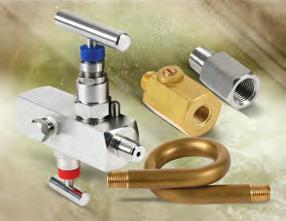
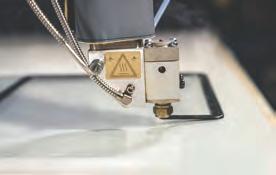
Included in the new product release are siphons that protect pressure gauges, transmitters, and switches from the effects of high-temperature media such as steam. New pressure snubbers protect instruments by suppressing



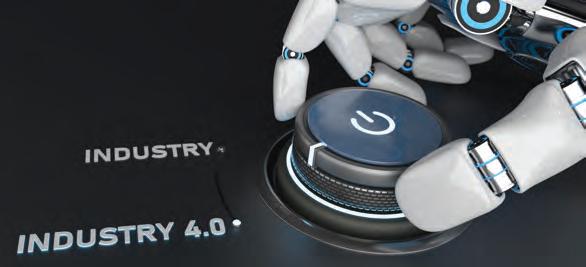
The results are in. Plant’s Survey of Industry 4.0 capabilities and outlook for 2023 clearly indicates that Canada’s manufacturers are on the road to transforming their businesses by adopting digital and other advanced technologies. They know the stakes are high. However, there are also some worrying signs that many com panies may not yet be ready to take full advantage of the technol ogies they are looking to deploy. Indeed, they may be putting their businesses at risk by not paying as much attention as they should to what is needed to translate their investments in technol ogy into real and sustainable performance improvements.
Here’s what the survey tells me. More manufacturers are in the process of adopting digital technologies to connect informa tion and production systems on the plant floor and back office, across facilities, with suppliers and customers. They are doing so primarily to improve productivity and operating efficiencies, provide greater visibility into production processes, track materials and shop floor assets, and enhance maintenance and equipment op erating efficiencies. Also, they are seeing benefits by way of increased throughput, decreased downtime, and better product quality.
More manufacturers are plan ning to increase investments in robotics and automation, artificial intelligence, cloud computing and data analytics solutions. Again, production efficiencies are the main motivator for investment.
There are still some major challenges that stand in the way of greater tech adoption. No surprise that skill shortages top the list. Difficulties integrating digital technology with legacy systems, overcoming resistance to change, keeping up with the pace of technological change, finding funds with which to invest, and making the financial
case for investment are other real impediments to tech adoption.
There aren’t too many sur prises. The challenges are just about the same as they have been over the past five years. The real story is in what does not seem to be very important for many manufacturers.
The fir st thing that stands out is that while efficiency improve ments are the most important objective for technology invest ments, relatively few companies connect those investments to creating value for customers. You may be tired of me saying this, but how can any company identify waste – the costs that should be cut – without knowing what processes are critical for creating customer value?
I see too many companies in vesting in AI or automation or data collection and analytics technolo gies without a clear idea of where in there processes these great ‘solutions’ should be deployed to deliver bottom line benefits. Greater inefficiencies naturally result. Sometimes stranded assets – automated equipment standing idle because downstream pro cesses aren’t equipped to handle higher throughput. Instead of reducing costs, ill-placed invest ments rapidly become a money pit. They impact the bottom line, unfortunately in the wrong way.
Another observation is that too many companies see digital and advanced technologies simply as a replacement for exiting ways of doing things. That’s a money-los ing proposition as well. Unless
manufacturers use data to create new business opportunities, new ways of providing value for customers, and new sources of services-based revenue, the only thing they will be able to accom plish in the best of circumstances is to become an efficient producer of commodity products with pric es continuing to fall in the face of competition. The business of manufacturing is no longer one of just getting the product out the door. It must be one of providing solutions for customers and for their customers’ customers.
The lack of skilled talent is a major constraint on improving manufacturing performance. It’s a good reminder that technology isn’t enough on its own to get better productivity results and no guarantee of business success. Ad vanced technologies are powerful tools. However, it takes people to figure out how to use them pro ductively, to operate and maintain them, come up with customized solutions in the first place, and to lead and manage a business successfully. With a quarter of Canada’s manufacturing work force retiring by 2030 and fewer young people looking for jobs in the sector, the challenge is only going to go from serious to acute.
There’s another very concern ing set of survey results and they’re related to cybersecurity. One-third of manufacturers say they aren’t concerned about cyberthreats. That’s a mistake. Many may not be aware they have already been hacked. According to one of the world’s largest insurance
underwriters, manufacturing is the sector most under threat of cyberattack, attacks are increas ing, and the severity of threat –losses suffered by manufacturers – is increasing even more rapidly. Manufacturers are under threat from attacks on their information systems, from attacks on their suppliers and their customers, and most insidious of all, from attacks on the smart products and equip ment they use or produce.
Among the manufacturers that do perceive the danger of cyber threats, 20 per cent say they are confident they have done enough to shield their business. Don’t be lieve it. Cyberattacks are becom ing more and more sophisticated. When companies report that they are investing in technologies or software programs to protect themselves, beware. Over 90 per cent of cyberbreaches come because of human error. Cyber security training for employees is vitally impor tant.
It’s a real concern when fewer than half of manufacturers have a cybersecurity strategy, only onethird have a cyberbreach response plan, and less than a quarter have crisis management procedures let alone a business continuity plan in place. At a time when manufac turing and manufacturing supply chains are more interconnected and more interdependent than ever before, a cyberattack that shuts down a supplier, a custom er, a production system, a CPU in a smar t product can have devas tating effects.
I don’t want to put a downer on the outlook for Industry 4.0 in Canadian manufacturing, there’s a lot to be optimistic about. How ever, we’re talking about serious constraints on business growth. If there’s one thing that Plant’s survey says loud and clear to me, it’s that investments in technology won’t be enough to sustain and grow Canada’s manufacturing economy. It takes much more than that. And far-sighted man ufacturing leadership above all.
Jayson Myers, the CEO of Next Generation Manufacturing Canada, an award-winning business economist and advisor to private and public sector leaders. E-mail jayson.myers@ngen. ca. Visit www.ngen.ca.

If there’s one thing that Plant’s survey says loud and clear, it’s that investments in technology won’t be enough to sustain and grow Canada’s manufacturing economy.


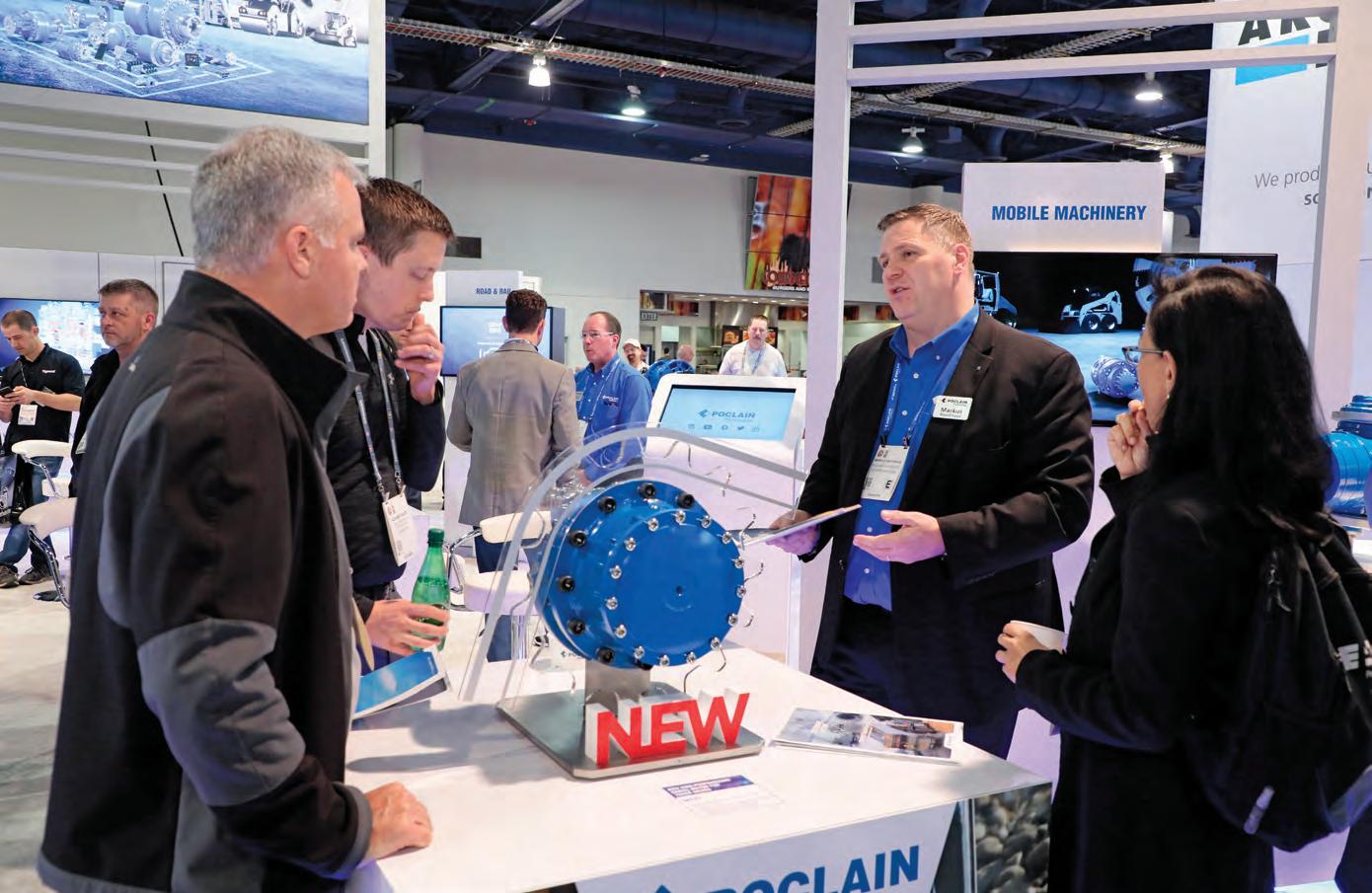
International Fluid Power Exposition (IFPE)

the place where engineers meet to:
new ideas with
other
technical
solutions current suppliers
unique
new partners among suppliers
other
20% OFF REGISTRATION



Starting at $158.00 (RLH-M18PA-NIS)
RFID read/write modules are transceivers that can read and write data to/from RFID tags (transponders) using high-frequency RFID technology. Unlike barcode scanners they do not require a clear line of sight and their performance is not affected by dirt or other markings. Contrinex RFID read/write modules offer fast data transfer times and communicate to higher-level devices such as a PLC over a communications network. These RFID Read/Write unitsuse the IO-Link protocol.
• Read/Write distance of up to 78mm away, IP68/IP69k environmental rating





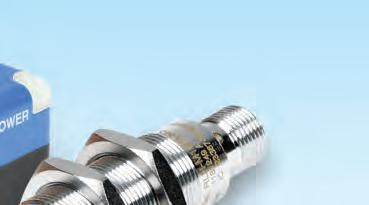


• HF RFID technology operates on 13.56 MHz and complies with ISO/IEC 15693




















• IO-Link V1.1 compatible



• RFID tags available in EEPROM and FRAM memory types with up to 2,000 bytes of user memory








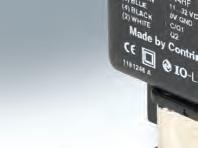


RFID tagsBarcode scanners Limit switches


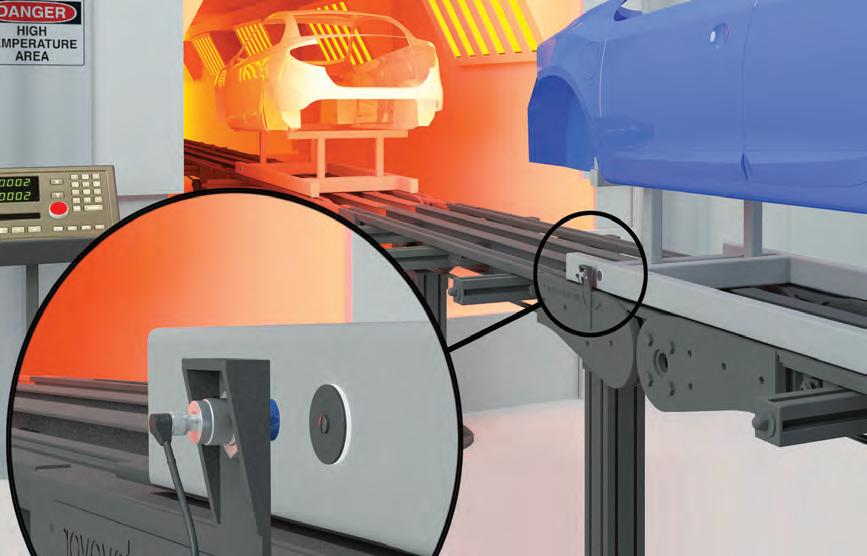

Fast free standard shipping* is

most
over $49 U.S., and that includes the brokerage fees (when using an AutomationDirect


broker). Using our choice of carrier, we can reach most
within 2 to 3 days.
*Free shipping does not apply to items requiring LTL transport, but those shipments can take advantage of our negotiated super-low at rates (based on weight) that include brokerage fees
See Web site for details and
www.automationdirect.com/canada


All